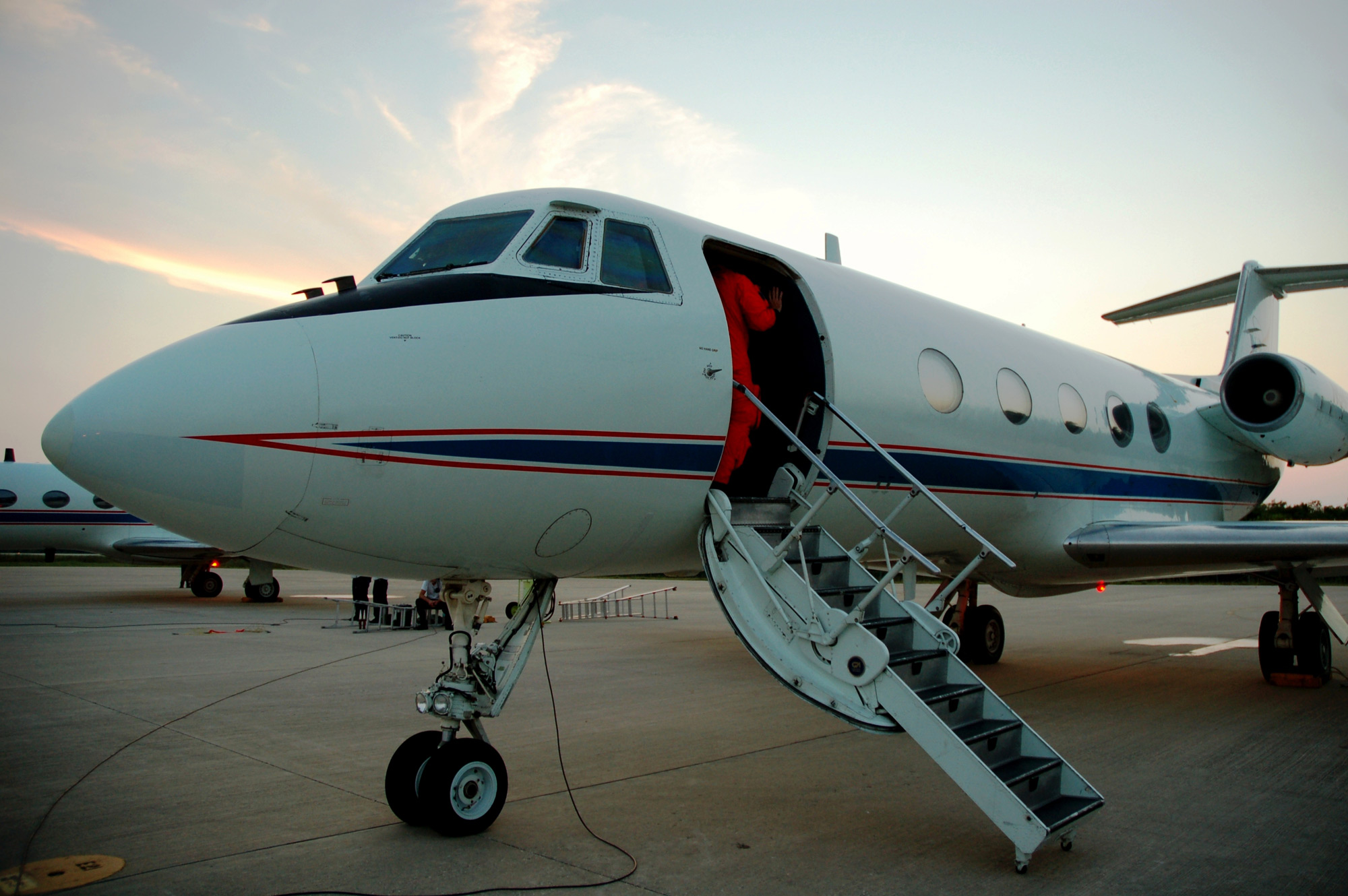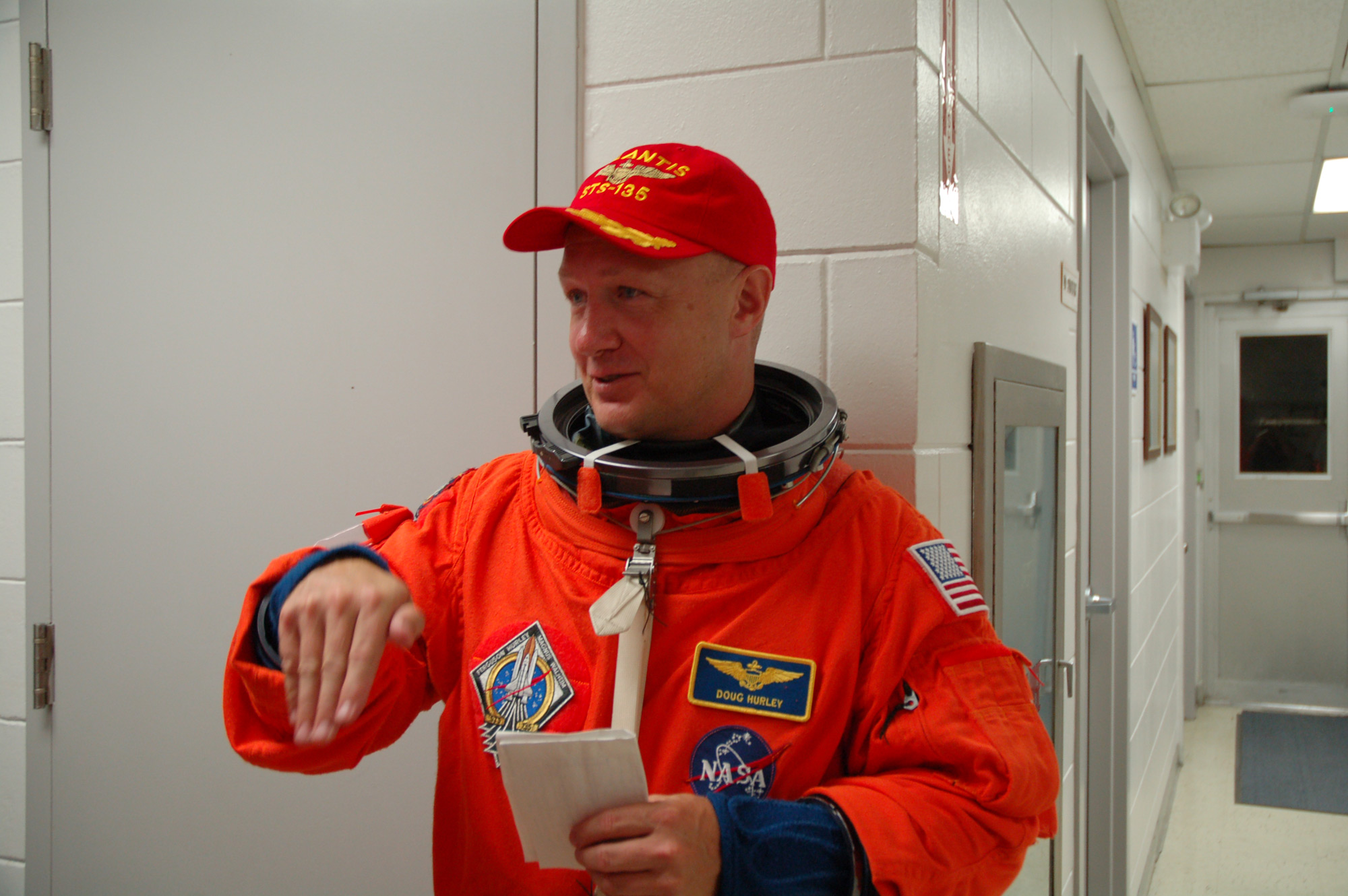How Astronauts Land Space Shuttles: A Reporter's Back Seat View


CAPE CANAVERAL Fla. – As a journalist you become used to, comfortable even, with covering events from the periphery, from the outside. On a recent training flight, that comfortable veneer disappeared as I joined the commander and pilot of the final space shuttle mission in a specially modified aircraft to practice landing the shuttle.
Commander Chris Ferguson and pilot Doug Hurley were flying the training mission as part of practice activities at NASA's Kennedy Space Center here in preparation for the final flight of space shuttle Atlantis. The mission launched on July 8 and will land tomorrow (July 21) to mark the end of NASA's shuttle era.
The practice culminated in a dress rehearsal called the Terminal Countdown Demonstration Test (TCDT), in which the four Atlantis astronauts donned orange spacesuits and rehearsed the countdown activities that will lead up to launch.
For our June 20 training flight, Ferguson and Hurley, wearing those same iconic launch and re-entry suits, flew specially modified Grumman Gulfstream II aircraft known as Shuttle Training Aircraft (STA). This particular aircraft is used due to the fact that its approach profile and handling qualities are similar to the shuttle.
The sun began to reach the horizon as we arrived at Kennedy's Shuttle Landing Facility (SLF), where the orbiters glide down to a stop to complete their missions. [Video: Training for Shuttle Landings]
We were provided with a briefing by astronaut Ken Cockrell, detailing what we could expect tonight. His easygoing description made the flight seem like nothing too extreme. Cockrell is a five-time shuttle veteran, and to him training on the STA is nothing to get excited about.
"Tonight we’re going to taxi out and take off, it is going to feel very much like a flight on a business jet, just like that," Cockrell said. "The engines do get a good workout on these flights, there is a slight 'jump' and then the nose will point down somewhat steeply."
Breaking space news, the latest updates on rocket launches, skywatching events and more!
"Here we go"
As the sun set, we leveled off at around 28,000 feet (8,500 meters) and circled out over the Atlantic Ocean heading back toward Kennedy Space Center. The historic launch complexes of Cape Canaveral Air Force Station were beautifully lit up on the beach below us. Someone up front said plainly, "Here we go."
What happened next felt eerily similar to the movies: The engines cut out and the aircraft seemed to plummet toward the ground. I could hear the engines being adjusted and the craft then entered a very steep descent. The sensation that you're falling out of the sky is more than a little unsettling.
The STA accelerated toward the ground and made a powerful rushing noise as it began to vibrate. As this happened I reminded myself who were flying the plane and tried to relax. Given the intensity of the sound, the sensation of falling and the vibrating aircraft, this wasn't easy to do.
New sights out the window provided me with a much-welcome distraction. KSC's Launch Complex 39A, bathed in lights, appeared off on the horizon and then the massive Vehicle Assembly Building loomed into view.
The next sensation was the sound of the plane's twin engines roaring back into full life as the SLF appeared not far below.
Quickly, we were off again for another go around!
As someone that does not like to fly, I actually managed to settle into a rhythm. That is up until attempt number five.
This time there was an anomaly and the plane pitched from side-to-side during the descent. Ferguson aborted this attempt and went around to do it again.
On the next attempt Ferguson was satisfied with the results. After seven attempts I had managed to get somewhat used to the experience. With this training taking place at night, a type of sensory deprivation fell over me, and although I knew we were heading toward the ground, I had no way to judge distance until we were very close to the SLF.
After I became somewhat familiar with the process I tried to pay attention to other aspects of this flight. For one, when the descent begins, it really does seem like the only thing keeping you in your chair is your seatbelt. [8 Surprising Space Shuttle Facts]
Also, during the eighth descent it seemed like the camera around my neck weighed about 50 pounds, like my shirt was made of lead and that even if I had wanted to move — I would have been unable to do so.
Riding in the back seat of history
What was probably one of the most dramatic flights of my life ended with the smoothest landing I have ever experienced. When we finally disembarked there was Ferguson, casually chatting with a reporter from Reuters. Ferguson described the training mission that took place that night as perfect.
"The winds were smooth, there was no moon, it was just perfect," Ferguson said. "It's good, it was a great night for you to go do this. There are worse nights, there are worse days. Ask the last crew that went. I don't think they had as much fun as you did!"
I am not totally certain I would have described my experience as fun, but it did provide me with even more respect for the men and women of NASA's astronaut corps.
Overall, I was extremely humbled to have been allowed to ride in the back seat of history.
NASA launched Atlantis on the final voyage of the space shuttle era on July 8. The shuttle spent 13 days in orbit to deliver vital supplies and spare parts to the International Space Station to keep the orbiting lab going after the shuttle fleet retires.
NASA is retiring its shuttle fleet after 30 years of spaceflight to make way for a new exploration program aimed at deep space missions. Atlantis is slated to land here at the Kennedy Space Center at 5:56 a.m. EDT (0956 GMT) tomorrow. After that, the shuttle —like its sister ships Discovery and Endeavour — will hang up its wings and be retired to a museum for public display.
Visit SPACE.com for complete coverage of Atlantis' final mission STS-135 or follow us @Spacedotcom and on Facebook.
A graduate of the University of South Florida, Jason is a former contributor to Space.com in the areas of satellites, the space shuttle, human spaceflight, and technology. He was a co-founder of Spaceflight Insider and his work has been published in Aviation Week & Space Technology, The Spaceport News and online with MSNBC.com, SpaceRef.com, Spacevidcast.com, Universe Today and other websites.


